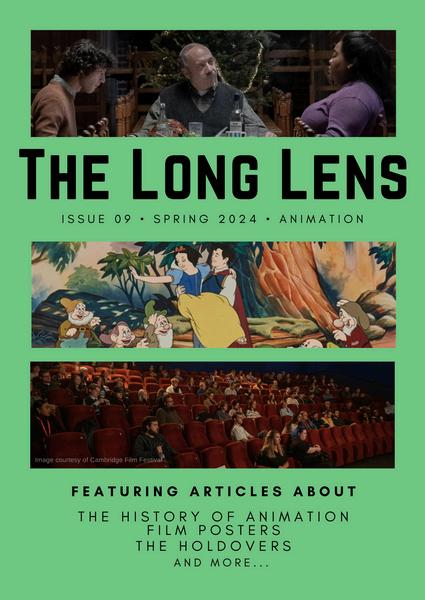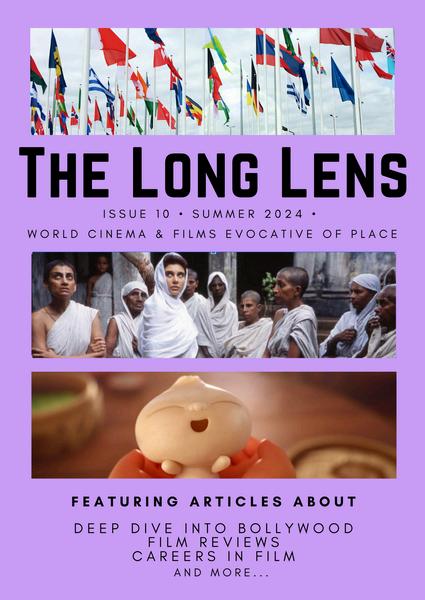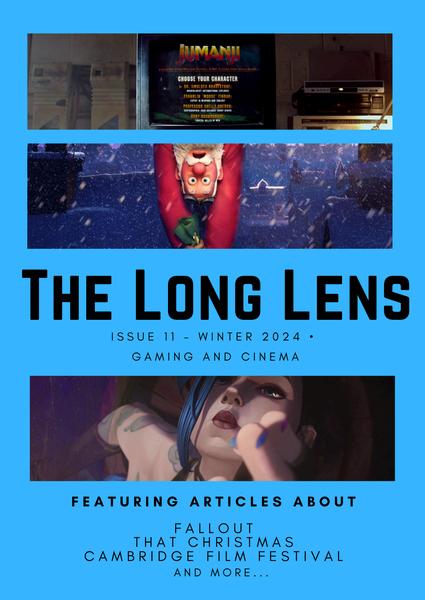








Welcome to Issue 12 of The Long Lens, our first ever physical issue of our beloved film magazine.
This issue celebrates our 5th birthday, the first ever issue of The Long Lens came out in the summer term of 2020. It was a lockdown baby and something the then first years really wanted to do amidst the crazy online lessons during the pandemic We are excited to hear from some of our previous contributors to The Long Lens including founding editor, Martin Attmore, and find out what they have been doing since leaving Long Road.
We are honoured to celebrate our little milestone alongside the college’s big milestone of celebrating 50 glorious years of Long Road Sixth Form College As such there are many articles with a ‘50’ slant to them including a focus on what happened in the world of film in 1975. Our theme for this issue is the passage of time but we also have our usual fayre of film reviews, feature articles of students getting out into the industry and deep dives into fascinating topics such as antisemitism in film. It has been a busy summer term with trips to New York City, Harry Potter World, the Watersprite FIlm Festival and the year 2 students preparing for exams
To close off the year, we want to say how very proud we are of Year 2 students Logan Bye, Lucy Bryant and James Robinson who have all been shortlisted for the Media Magazine Production Awards. This means that those students will be in attendance at the awards ceremony in London at BFI Southbank on 11th July, they will get to see their work on one of the biggest screens in the country. Good Luck to them all.
This time of year also means saying farewell to our year 2 students and our outgoing editorial team, they have been brilliant to work with and we shall miss them all. Farewell to our outgoing Editor, Victoria Vereikyte, and regular contributors, Emma Brennand and Dominic Ramshaw - thank you team for all your hard work and enthusiasm for The Long LensRemember to always BeLong!
We would like to welcome Charlotte Davey into the role of Editor If you would like to get involved in The Long Lens as part of our editorial and design team, or as a regular contributor then email us at thelonglens@longroad.ac.uk.
Have a great summer!

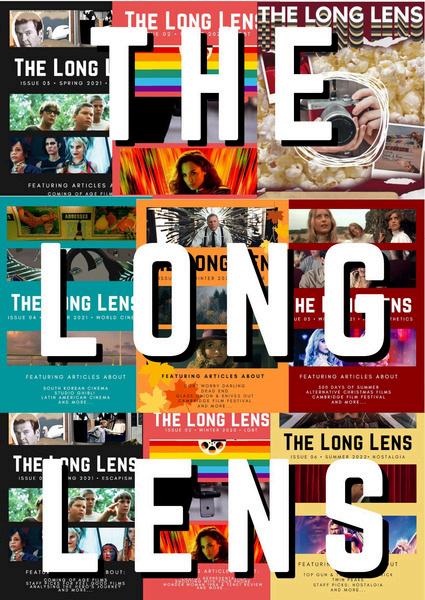
Victoria Vereikyte
Emma Brennand
Documentary Shoot by Susannah Tankard
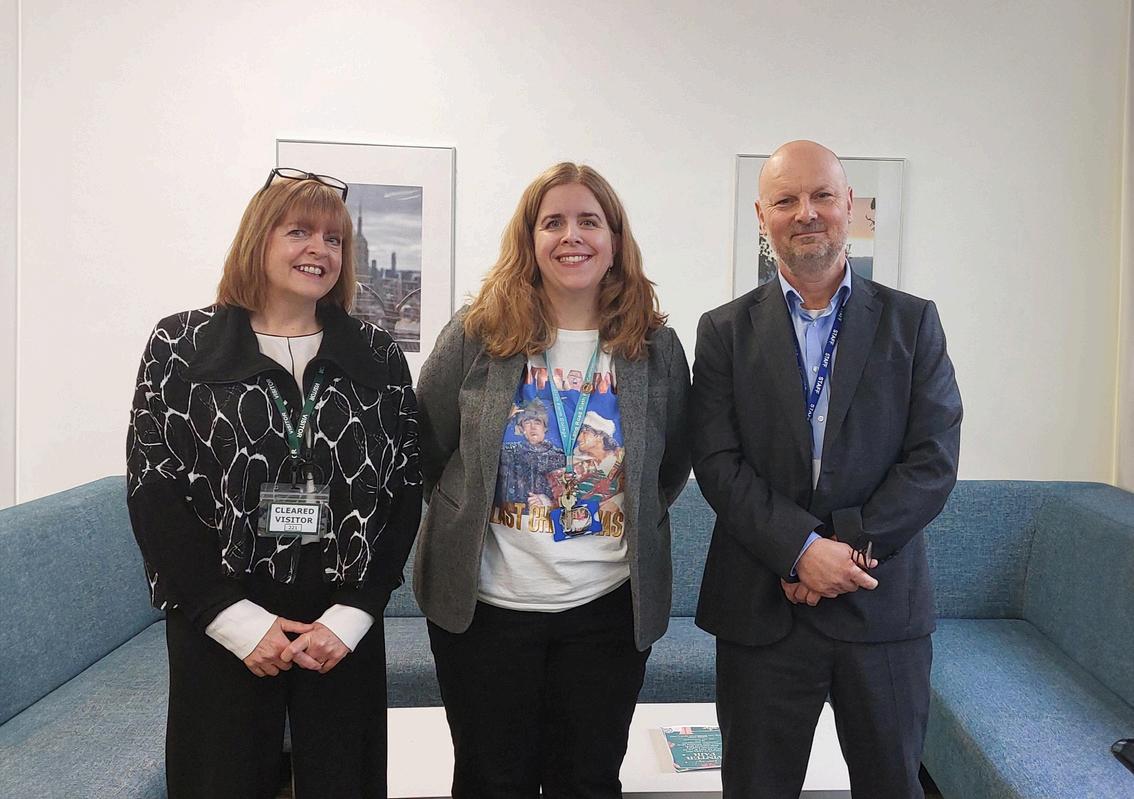
LIGHTS, CAMERA, REFLECTION:
, CAMERA, REFLECTION:
TWO PRINCIPALS TALK FAVOURITE FILMS,
TWO PRINCIPALS TALK FAVOURITE FILMS,
CINEMATIC INFLUENCES, AND THE POWER OF FILM
CINEMATIC INFLUENCES, AND THE POWER OF FILM LIGHTS, CAMERA, REFLECTION: TWO PRINCIPALS TALK FAVOURITE FILMS, INFLUENCES,
CAMERA, REFLECTION: FILMS, INFLUENCES,
As this is a special edition celebrating both The Long Lens’ 5th birthday & the college’s 50th anniversary, it seemed only right to sit down with our very own Steve Dann, the Principal of Long Road. One of the biggest things to happen to our college in recent years is the joining with Colchester Sixth Form to become the Sixth Form College Trust. So we also invited their Principal, Jo Cadman to talk all things film. From guilty pleasures and formative favourites to the way cinema shapes learning and challenges perspectives, the conversation proved as entertaining as it was insightful
When asked to share their all-time favourite films, Jo and Steve didn’t hold back Jo, an English teacher, has a taste for the visually rich and emotionally complex, naming Dangerous Liaisons as her top pick.
“It’s so dark and cynical at first, but by the end, you realise there’s this really powerful moral core, ” she explains, describing John Malkovich’s character as someone whose emotional manipulation ends up backfiring spectacularly Other titles on her list include Blade Runner, Apocalypse Now, and the cult-favourite Eternal Sunshine of the Spotless Mind. “I’m not even a Jim Carrey fan,” Jo confesses, “but he’s brilliant in that ”
Steve, meanwhile, took a trip down memory lane with Star Wars: A New Hope
“I saw it in the cinema when it first came out, and I still remember the opening scene. It changed everything,” he says His other top choices? The Blues Brothers,
which he calls his go-to “feel-good classic,” and High Fidelity, which he loves for its killer soundtrack and surprisingly faithful adaptation of the very British novel by Nick Hornby
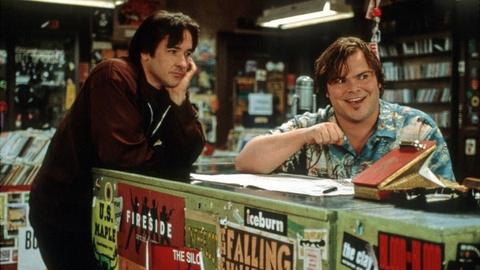
Both Principals agree that their film-watching habits have changed since student days. Jo now finds films to be more of an ‘event,’ something she chooses carefully and only watches when she has time to commit Steve shares a similar evolution:
“When I was at college, we had this film club where you’d just watch whatever was on Now, I’m much more selective I’ll go to the cinema for something big, like Dune or a remastered classic.”
Though both hesitate to name personal ‘hero’ directors, they do highlight filmmakers who’ve influenced them Steve mentions Nicolas Roeg and his non-linear storytelling in Don’t Look Now, along with Tim Burton’s quirky visuals and emotional storytelling, especially in the underrated Big Fish Jo gives a nod to
Peter Greenaway’s dark, provocative work, like The Cook, the Thief, His Wife and Her Lover, and even confesses to tearing up at Toy Story 3:
“It’s surprisingly moving! Much more emotionally weighty than people expect.”
On a lighter note, we asked who would play them in the film of their lives Jo jokingly leaned into her “goth” reputation, suggesting Helena Bonham Carter in a Tim Burton production. Steve nominated Bruce Willi, “Obviously,” with the Coen brothers at the helm for their signature mix of “quirky humour, great music, and random violence.”
Both Jo and Steve find Hollywood’s portrayal of teachers to be wildly exaggerated
“You either get the maverick saviour, like in Dead Poets Society, or the total villain,” Steve says. But they do give credit where it’s due: Matilda, Bad Teacher, and even School of Rock get honourable mentions for balancing satire and affection.
One standout for Steve is the unforgettable PE scene in Kes
“Every Northern lad who went to school in the ‘70s knows that scene. The teacher gives himself a penalty and sends a kid off for arguing It’s perfect ” Jo throws in a shout-out to Dolores Umbridge from Harry Potter: “A terrifyingly accurate representation of the worst kind of school leadership ”
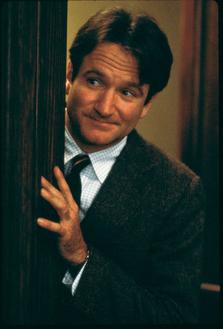
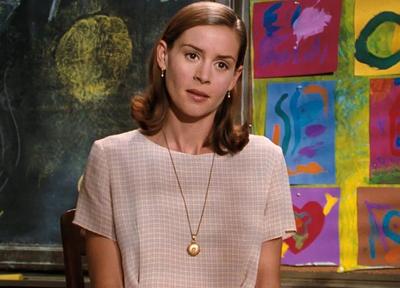
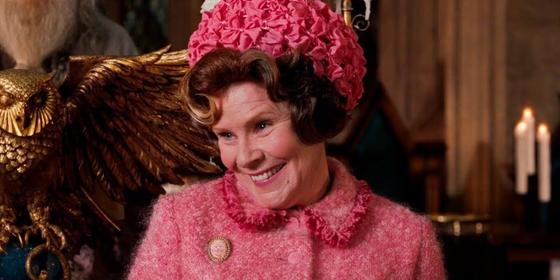
When it comes to using film in education, both teachers are firm believers
“A film like City of God can transform abstract ideas about inequality into something visceral and human,” says Steve, a geography teacher “You can talk stats all day, but seeing a story brings it home.”
Jo agrees: “Film combines literature, art, sound, so many disciplines It’s collaborative and emotional, which makes it an amazing tool for critical thinking and creativity.”
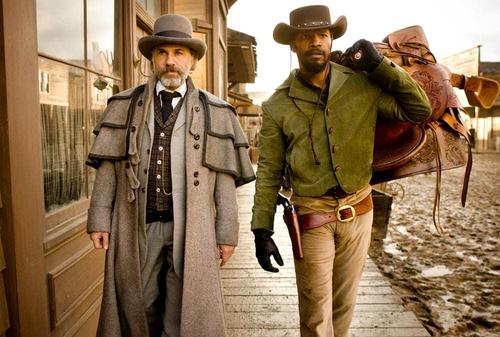
Both teachers argue that some genres don’t get the respect they deserve, especially Westerns. Steve praises films like Unforgiven and Django Unchained for flipping the traditional cowboy narrative and confronting issues like race and violence. Jo adds a recent Jane Campion film The Power of the Dog as another example of the genre ’ s evolution
For films that challenge norms, Jo cites East is East for its nuanced depiction of the British Asian experience in the North of England, “familiar yet different.” Steve also champions more inclusive casting in historical dramas and Shakespeare adaptations.
“What is acting, if not the ability to play anyone?”
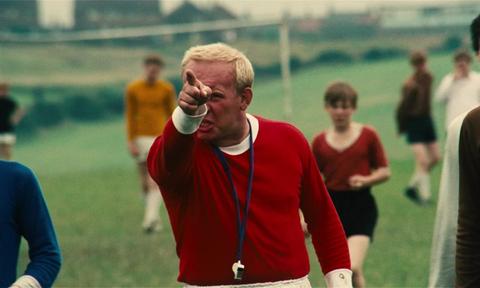
As we wrapped up our conversation one thing was clear: for these two educators, film is more than entertainment It’s a way of seeing the world, processing emotion, and sparking conversations whether in the classroom or the college bar From Star Wars to Toy Story, cinema continues to light the way
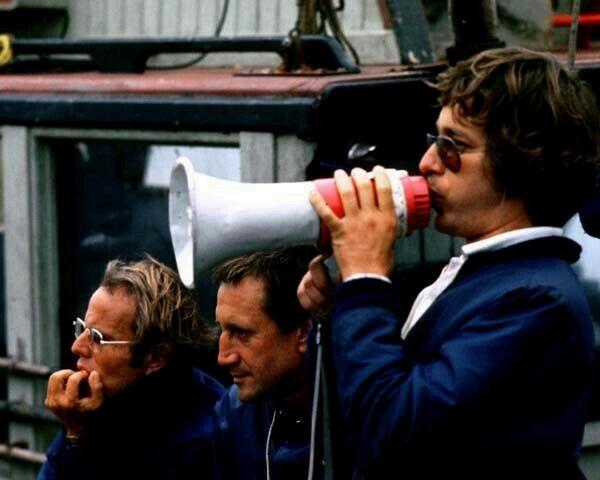
50 Years. My, how time flies. 1975 was a memorable year in many ways. International Women’s year was marked, promoting gender equality, a little known tech company known as Microsoft was founded Arguably, most important of all, Long Road Sixth Form College opened its doors. A place I have been happy to call my employer for the last six years. But this is a film magazine, you could just google what happened in 1975 around the world. So allow me to take you on a journey as I google what happened in 1975 for Film and TV
In many ways, ‘75 is an unsung year in the history of cinema This was the year where we can argue that the modern Blockbuster was founded Massively expensive movies making unfathomable amounts of money and pleasing crowds worldwide on an exponential scale The film that started this? Well, have you ever gone swimming in the ocean and worried about sharks? If your answer is yes then you ’ ve seen Jaws
An absolutely iconic, breathtaking, crowd-pleasing magnum opus for relative newcomer and indie darling, Steven Spielberg The iconic director's third outing brought horror to the mainstream with a tense, pulsepounding and, at times, humorous popcorn chewing masterpiece that is almost not spoken about enough At this point, if you ’ re a movie fan, it’s almost a given that you ’ ve seen Jaws and know it’s fabulous.
The film just excels on all accounts Spielberg’s mastery of blocking actors is on full show here. The iconic POV shots of the shark moving through the
BY
BY SAM GAMBLE
water have lost creative brownie points by just how much they have been replicated and parodied since. The uncomfortable feeling of sneaking up on prey, tapping into that primal and animalistic hunter instinct at the root of survival is perfectly captured through the camera.
And let’s not forget that score Oh, that score John Williams, teaming with Spielberg for the second time after Sugarland Express, really established the magic they can create together with music That dissonant, creeping, persistent two-note motif is instantly recognisable and, again, almost loses some of its impact for how much its inspired and been replicated in modern scores today

This film is littered with memorable moments. The first time the shark attacks, the beach rampage, Quint’s death (sorry, spoilers) is one of the most gruesome deaths ever yet lacking in over-the-top gore, and the final showdown between Brody and the shark is one of the best final battles ever committed to celluloid
It’s the ultimate film that just gets nothing wrong. It sings on all accounts Then you start to read about the production history, how it was the first film shot at sea, the mechanical shark that kept failing, and the film going over-schedule and budget, only to completely redeem itself and set the template that most Hollywood films since have followed and continue to do so. It’s rare that cinema gets better than this.
Excuse my Jaws based rambling, but hey, I’ve been looking for a chance to talk about shark movies, so I took the opportunity.
A personal favourite of mine is the release of Rocky Horror Picture Show, the campy musical that launched a thousand theatre shows and Tim Curry’s film debut. Others may enjoy the definitely light-hearted romp One Flew Over the Cuckoo’s Nest, disaster epic The Towering Inferno, or rock-opera galore with The Who’s Tommy. You’re not short of quality for 1975.
Some famous faces were born in 1975 as well, Drew Barrymore born February 22nd would go on to capture our hearts in Spielberg’s follow-up crowd pleaser in E T , David Harbour of Stranger Things fame was born April 10th, and September 18th gave the world Jason Sudeikis, before he donned the Ted Lasso moustache (disappointingly, he wasn’t born with it)
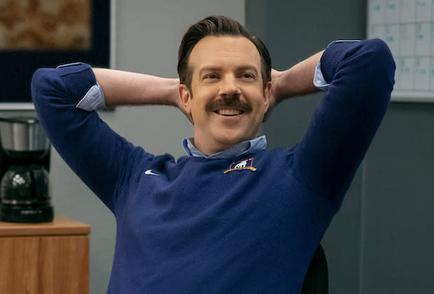
The world of music would be Torn without Natalie Imbruglia, born February 4th, musicals would be missing the talent of Tim Minchin, and what would daytime TV be without Alison Hammond? Better, if you asked my nan, who claims bake-off hasn’t been the same since Mary Berry left

Travolta, Dennis Quaid, Sam Neill, Patrick Stewart. The world wouldn’t be the same without Star Wars, Grease, and Pretty Woman
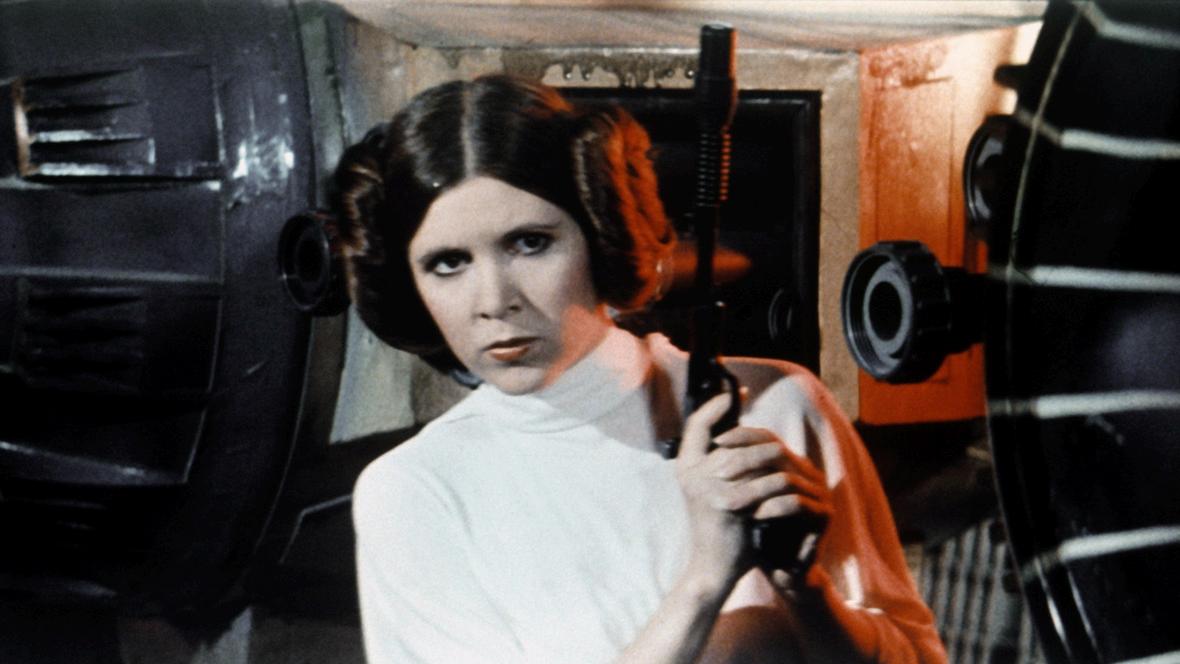
So when I say that 1975 is undersung in the history of cinema, I think you can see why It gave birth to plenty of stars and kickstarted the careers of some of the most well-known actors and musicians of this generation, many enduring into the present day Whilst it may not feature a Star Wars or a Jurassic Park in the cinema, it was the start of something. A cultural shift in the way we consume movies, in what we watch and how we watch them And not only that, but the start for the college that this magazine has the pleasure to call home.
BY CONNOR ASTRAN BY CONNOR ASTRAN BY CONNOR ASTRAN
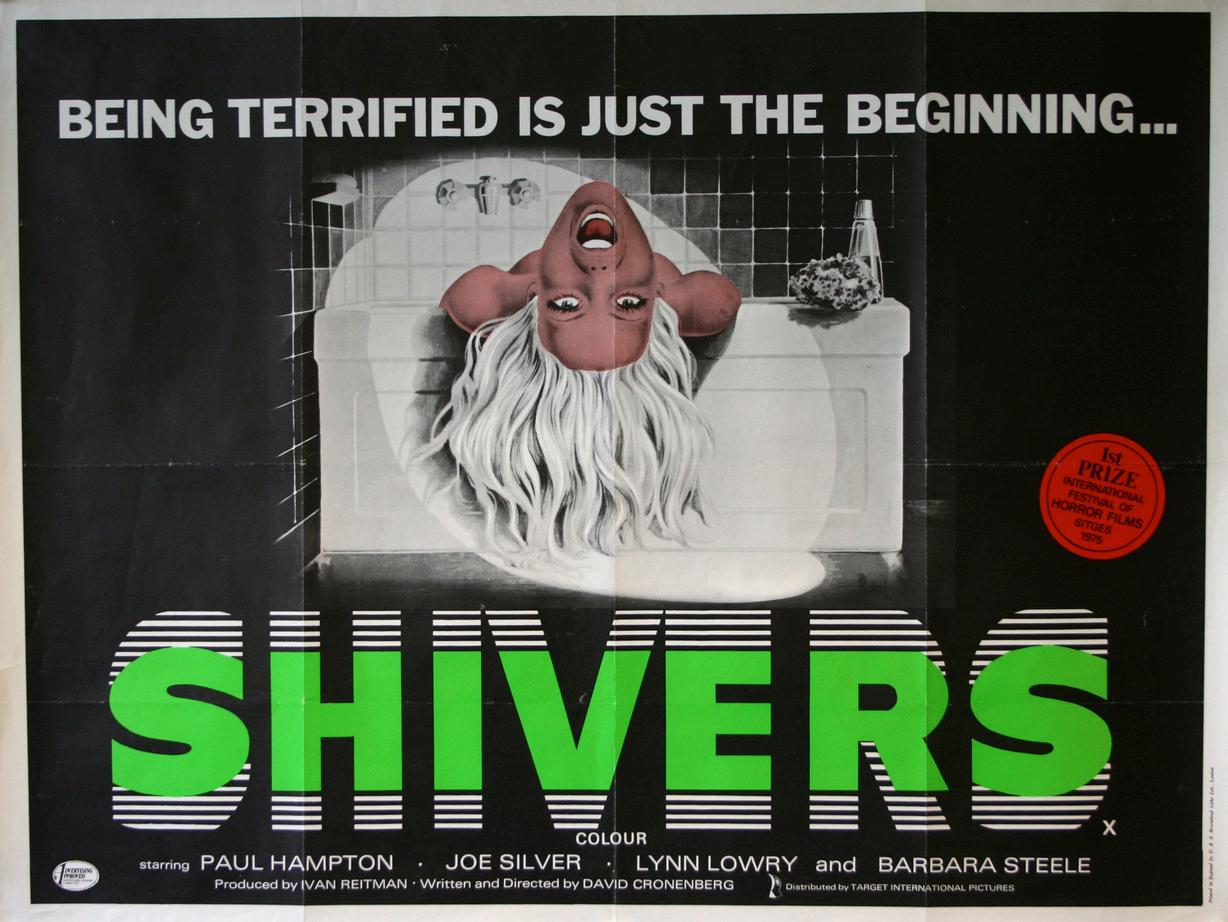
*This article will contain spoilers for Shivers and other films. **Trigger warning: rape, sexual assault, gore, violence.
David Cronenberg is often referred to as the father of the Body Horror genre. Shivers was not his feature film debut, but it was one of his first big steps into what would become a long and innovative career in the film industry. For many, Shivers has become a cult classic in which you can see the foundations of Cronenberg’s stylistic identity take form with weird concepts, practical special effects, and the corruption of the human form. The film follows the affluent residents of a high-rise apartment building, respectable persons with careers in medicine, law, and a host of young professionals. Their idyllic and privileged lives are changed after a doctor murders a young woman in the building and subsequently sets a parasite loose, causing said residents to lose their inhibitions and become sexcrazed maniacs
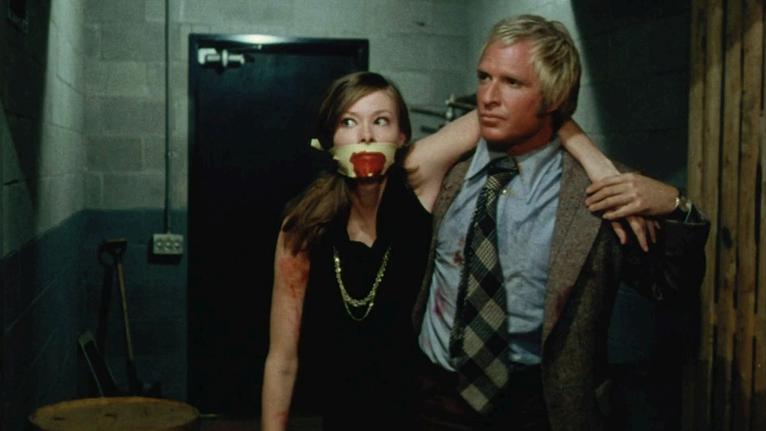
Body Horror fans will have noticed that this theme is unfortunately rooted very deep, despite the fact that originators such as author Mary Shelley (Frankenstein) wrote stories about the mistreatment of women by society and advocated for gender equality Cronenberg himself has said that Ridley Scott’s Alien, which some agree is itself an analogy for reproductive rights, was heavily influenced by Shivers in spite of its sexist overtones In an interview with Serge Grünberg in 2006 Cronenberg said, “But the writer of Alien has definitely seen these movies, Dan O'Bannon. The idea of parasites that burst out of your body and uses a fluid and leaps on your face, that's all in Shivers”.
So why does this complicated relationship exist between sex and the body horror genre? Why does 1979’s Alien stand the test of time, whilst 1975’s Shivers seem to miss the mark by such a distance? To be frank, it’s a complex issue and there is no definitive correct answer, but I think that two factors play a part in this discrepancy are sexism within the sci-fi genre and the second-wave feminist movement of the 60s and 70s
Body Horror has always had strong ties to the Science Fiction genre, but the latter had its first boom in popularity much earlier in the 1920s and 30s with the advent of pulp magazines such as Amazing Stories and Weird Tales. Whilst a minority of the stories in these magazines had female writers, feminist themes, and strong female characters, the majority of authors were male and often featured portrayals of women that were sexist Most commonly, women were helpless damsels or sexual objects, lacking personality entirely and seen only as objects of male desire. Unsurprisingly, this was typical of various types of media of the time and many films would fail the Sexy Lamp Test, but nonetheless this would go on beset the sci-fi genre for decades to come.
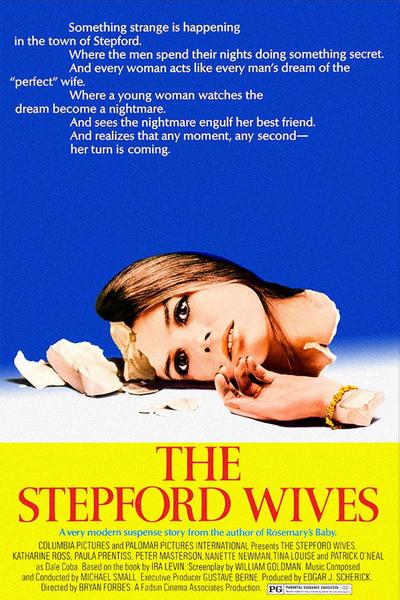
The se bout a lot of change in society, and this can be seen in a lot of the movies of the time. Jeanne Dielman, 23, quai du Commerce, 1080 Bruxelles (1974) records the mundane and oppressively dull routine of a housewife, The Stepford Wives (1975) deals with female autonomy and the subduing of women ’ s voices in a domestic setting, and Private Benjamin (1980) explores women stepping outside of their gender roles and realising their worth outside of being a wife and homemaker. The popularity of this movement peaked in the 70s, so whilst some filmmakers were incorporating this into their films, many were still behind the changing times.
Even with this wider context, I don’t think this excuses Shivers lack of sensitivity and frankly barbaric approach At the time of the film’s release, others also felt this way. In September 1975, Canadian journalist Robert Fulford was so outraged by the film (which was partially funded by tax-payer money) that he wrote an article titled You should know how bad this film is After all, you paid for it. It described the movie as violent, depraved, and “the most repulsive movie I’ve ever seen ” , and subsequently made it difficult for Cronenberg to obtain funding for future movies. Not only this, but it would cause Cronenberg to be kicked out of his apartment in Toronto and lead to the Parliament of Canada debating the artistic value of the film.
I think it’s fair to say that Shivers is not a film I’m in a hurry to watch again or even recommend to others, but its influence in the body horror genre cannot be denied The film's financial success allowed Cronenberg to go on to create such classics as Videodrome, The Fly, eXistenZ, and Crimes of the Future, and has influenced a number of its contemporaries including one of my favourite horrors, Alien. Even Cronenberg’s son, Brandon, has clearly been influenced by his father’s films and is one of many directors championing a modern resurgence in the genre.
Films such as Raw (2016), Swallow (2019), Possessor (2020), Titane (2021), Malignant (2021), and Men (2022) have been a driving force in repopularising body horror Many of these have cast off the shackles of the archaic tropes of Shivers in search of a new freedom to explore themes like equality, gender, power, and beauty. The most notable new entry into the genre is 2024’s The Substance, a sublime look into the beauty industry and a compelling condemnation of the film and media industries attitude towards female aging The Substance is one of very few body horror films to have ever been nominated for an Oscar, let alone won. I for one am a massive fan of this new era of body horror. It’s a genre that has always broken boundaries in one way or another, but the last decade has exemplified its ability to address and criticise the most important parts of society.
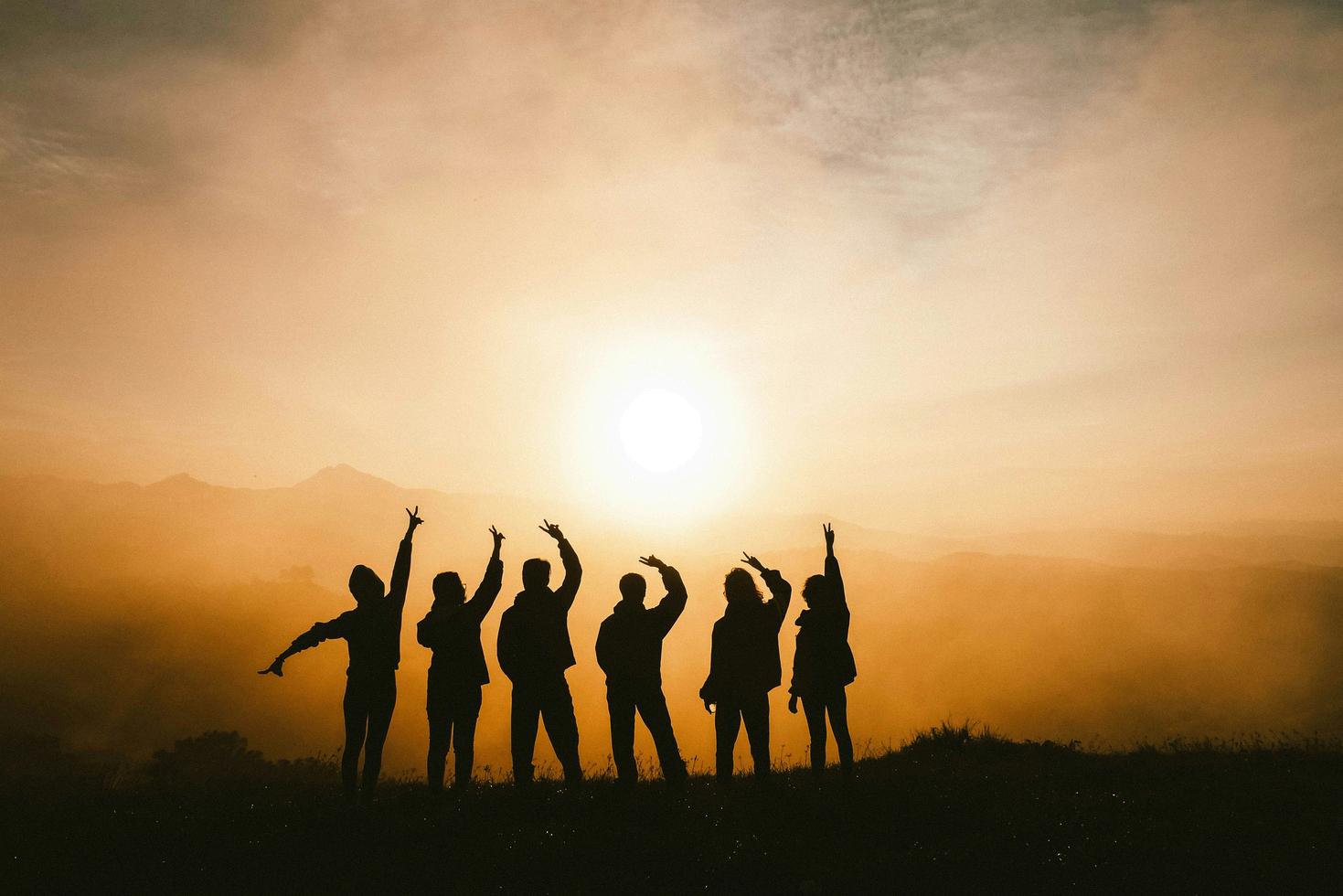
see what they’ve been up to and where they’ve taken their love of film.
BY ANDREA JOYCE BY ANDREA JOYCE BY ANDREA JOYCE
Marianna Kouznetsova
1). What was your role in The Long Lens, and what did you study at Long Road? Deputy Editor, and I studied Psychology, combined English and Film Studies.
2). What was your favourite article that you wrote for The Long Lens? My favourite article was the one I wrote about the HBO show 'Oz' - I watched it very
also gave me inspiration for what I wanted to talk about that week.
4). What have you been doing since leaving Long Road? I took two years out to work and save money, and now I'm in first year studying Film at the University of Brighton I have a radio show where I discuss TV shows and films, and I'm President of the Livestream Society, where we stream varsity sports events and plan to livestream a robot wars event in May!
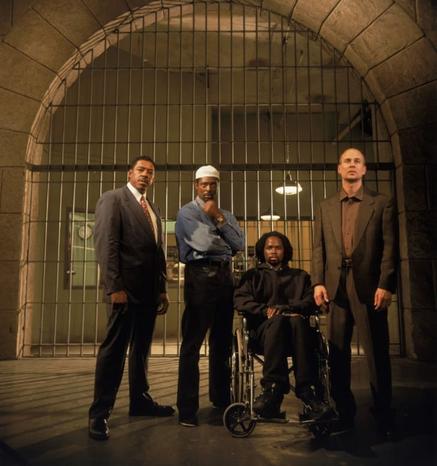
s b f d k ll ght w h a g the 9 ; it s
5). What advice would you give to existing students of Film and Media? My advice to all students but especially to media students, is to take at least one gap year to mess around This field is so huge, it's difficult to know where to even begin delving into the different areas Practice with a camera, volunteer at film festivals, write a script, look for small roles on sets locally via Facebook, take an acting class, volunteer at a theatre, whatever!
1). What was your role in The Long Lens, and what did you study at Long Road? I contributed a few articles to The Long Lens over the course of my time at Long Road, writing about a few of my favourite films I studied Film and Television at Long Road, as well as History and Drama and Theatre Working on articles for the Long Lens helped me decide that I wanted to continue to study film at university.
2) What was your favourite article that you wrote for The Long Lens? I wrote an article about Peter Weir’s Picnic at Hanging Rock, and whilst looking back it was a very rambling and unfocused piece, I really enjoyed writing about that film, and its since become one of my favourite films ever
3) From your experience, what were the benefits of working with The Long Lens? I really enjoyed having an open forum to discuss my thoughts on film, and to read the thoughts of other students When

numerous exciting projects and met many talented, creative people. I’ve worked on a number of films as part of my course in various roles, but I’ve also been lucky enough to be involved in some very exciting projects in my spare time as well. Last year, I wrote and directed a short comedy mockumentary about film students called Working Title, and currently I am coproducing and working as 1st Assistant Director on my final, graduate film, a very ambitious horror film about spiders called Thorax I’ve also been a committee member for UoB’s filmmaking society, In Film, for the past two years, which has been a great experience. I think it’s partially due to my involvement with The Long Lens that I’ve continued to be so involved with extracurricular work at university.
5) What advice would you give to existing students of Film and Media? I would advise any film students who are passionate about making or even discussing film to pursue that interest as much as possible, especially outside of education Many of the most rewarding experiences and best people I’ve worked with have come from taking initiative to pursue my interest with film beyond just studying it in an educational setting. I’ve learned a lot about making films, organising filmmaking projects, connecting with other creatives and developing my analytical skills my involvement with extracurricular projects
was your role in The Long Lens and what study at Long Road? I was the deputy editor ong Lens in 2020, in my second year at Long d I studied English language and literature, udies, and film studies.
was your favourite article that you wrote Long Lens? My favourite article–and tely the only article–that I wrote for The Long on 'Black Cinema' Seeing as the George dent was such a big topic of conversation at it was clear that many people (my age in ) wanted to educate themselves on the topic brutality and the systemic racism within the ystem of the US But amongst all the chaos of protests and riots, I wanted to share my top picks of films and documentaries that shine a light on not only African American history, but black representation in general. Sometimes we forget that films aren't just a form of entertainment and escapism, but a means of education and discovery as well.
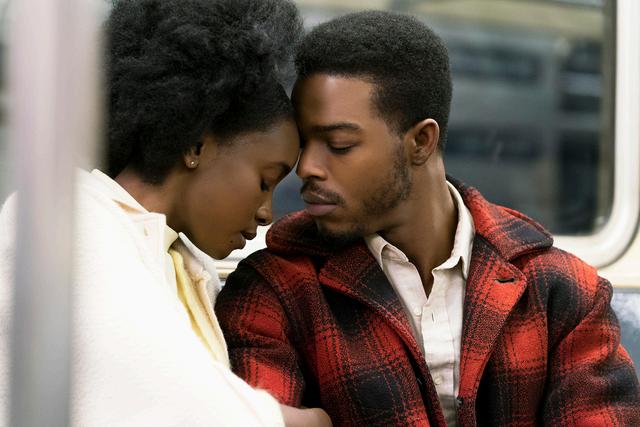
3). From your experience, what were the benefits of working on The Long Lens? Working on The Long Lens was a great experience Especially with the pandemic at the time and having to quarantine, it was a fun enriching activity I got to be a part of Not only was I exercising my creative writing skills, but I got to write about something I'm very passionate about: Film! And I also had the responsibility of designing the overall look and layout of the magazine, that was another thing I really enjoyed
4). What have you been doing since leaving Long Road? Since my departure from Long Road, I took a gap year where I worked at an events management academy, then left for university the following year Now, I have officially completed my three years studying Film and TV at University of The Arts London, and will be graduating mid July For my major project unit in my final year, I pitched a 10-minute coming-ofage drama idea that was selected to be made, and after a very intense year of hustle and grind as the cowriter, director, AND producer, I'm very proud to have screened my film 'Musclebound' for the first time in my grad show private viewing on the 14 earlier this month Now I'm working on fixing a few final bits and bobs on the film, and submitting it to any festivals that'll have us Aside from this, I'm also flying back to Thailand in September to gather some material for a documentary pitch I'm working on, so it's all looking very exciting (busy) for me!
5) What advice would you give to existing students of Film and Media? As a piece of advice, I'd really urge everyone to indulge in as much art and media as you can. Never stop observing life, whether it's 'real' or fiction Anthropology is everything for me as someone who's goal is to represent the human experience, and through my observations, inspiration is everywhere You just need to spot it.
1). What was your role in The Long Lens, and what did you study at Long Road? I was the founding editor of the first issue in 2020, and I studied A Level
Film Studies and the Extended Media Diploma at Long Road
2). What was your favourite article that you wrote for The Long Lens? Five years ago is a long time, but I remember recommending Ruben Brandt: Collector, a hidden gem of a film
3). From your experience, what were the benefits of working on The Long Lens? I still look back on the process of putting together The Long Lens as one of my clearest examples of organising a team On top of that, any chance to practice writing about film will benefit you down the line, whether that's for essays or just forming a coherent argument about films
4). What have you been doing since leaving Long Road? I went on to study Filmmaking BA at the University of Sussex, Brighton, achieving a First Now back in Cambridge, I work part-time at a cinema alongside working on films mainly as a sound recordist and lighting designer/gaffer - with a smattering of writing and video production. I have also worked as an Intern for the Cambridge Film Festival in 2023 and 2024, giving me lots of opportunities to develop skills and create new opportunities
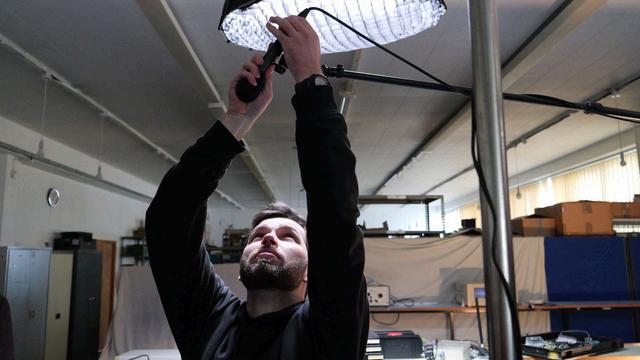
5). What advice would you give to existing students of Film and Media? My advice to Film and Media students would be to look at what you like and dislike in terms of content you are watching, and think about why; also, to try and do things that you think will help you in the long run.

Anora (2024) – director Sean Baker’s dazzling new cinematic hit. Full of passion, energy, emotions, and drama, the film has been widely critically acclaimed by thousands, and hasn’t been shy from stealing the spotlight from many prestigious award ceremonies – BAFTAs, Cannes Film Festival, Critics’ Choice Awards, and the Producers Guild of America Awards. But Anora’s true shining-glory moment was at the 97th Academy Awards (or the Oscars, as they’re more widely known), taking home an astonishing 5 out of 6 golden statues of greatness In this article, I’ll be discussing the importance and significance of Anora’s win at the Oscars, and what it means for the future of modern cinema
Best Picture, Best Director, Best Actress, Best Original Screenplay, and Best Film Editing, Anora was at the centre of Hollywood’s biggest event of the year The incredible Sean Baker (director, producer, editor, and writer) claimed a record-breaking four prizes, becoming the first person to personally win four Oscars for a single film. Baker, who previously directed The Florida Project, Tangerine, and Red Rocket, originally came up with the idea for Anora around 15 years ago. He wanted a story set in the Brighton Beach/Coney Island area, and wished to explore the Russian-American community of the area, and their relationships with one another Anora came out to be a film centred on the life of fictional Anora “Ani” Mikheeva (M Madison), a stripper and sex worker living in New York, who falls in love and ends up marrying a charismatic (yet immature and foolish) wealthy son of a Russian oligarch named Ivan “Vanya” Zakharov (M Eydelshteyn) Upon Ivan’s parents and
their henchmen Toros (K Karagulian), Garnik (V Tovmasyan), and Igor (Y. Borisov) finding out, they seek to immediately annul this marriage, viewing this act to be disgraceful and shameful to the affluent Zakharov family because of Ani’s status and job as a sex worker. Through the course of the film, Ani slowly fades away from her seemingly picture-perfect Cinderella love story to a state of dismay
Apart from Anora being a massive historic win for first-time Oscar winning director Baker, Anora has made history once more by becoming the first film to feature the Armenian language to win Best Picture, highlighting a massive breakthrough for the Armenian community in filmmaking. Mikey Madison, the breakthrough star of the film portraying Ani, became the first Gen-Z member to win an Oscar in an acting category, stating that this was a “dream come true.” And Yura Borisov, starring as the quietly compassionate Igor, became the first Russian actor in almost 50 years to snag an Oscar nomination for this role It was highly surprising yet an unexpected blessing that Anora grew to be so popular and successful, seeing as it was an indie-film with low $6 million budget which ended up grossing $59 5 million worldwide
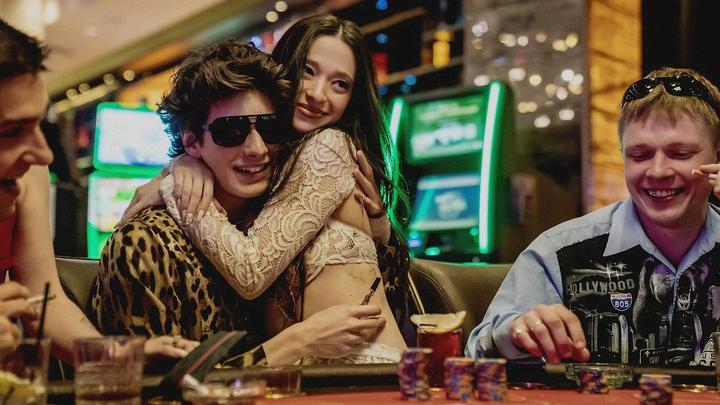
But so what? What’s so important and groundbreaking about Anora, apart from it gifting Baker and his cast some awards and some sprinklings of stardom? The main buzz and significance of Anora’s success lies within the film’s production – it’s an independent film which was produced by smaller production and distribution companies (NEON, Cre Film, Focus Features and more.) The fact that Anora’s an independent film that won so many Oscars was celebrated as a triumph for independent cinema and a victor for filmmakers like Baker who work outside the traditional Hollywood system – Anora’s quintuple Oscar win has paved the way for future independent filmmakers, recognised the importance and validity of their craft, and solidified that the Academy are open to acknowledging independent cinema Apart from Anora’s independent spirit, the film’s wider triumph was also key in helping change and widen people’s perspectives of those working in the sex industry. Through this film, characters such as Ani and her friends who work in the upscale Manhattan strip club are portrayed in a three-dimensional way, and harmful or negative stereotypes are avoided Anora is a reflection on labour, class, different nationalities, and sex work. Madison stated in her Oscar victory speech that she wants to “honour and recognise the sex worker community,” and will “continue to support and be an ally.”
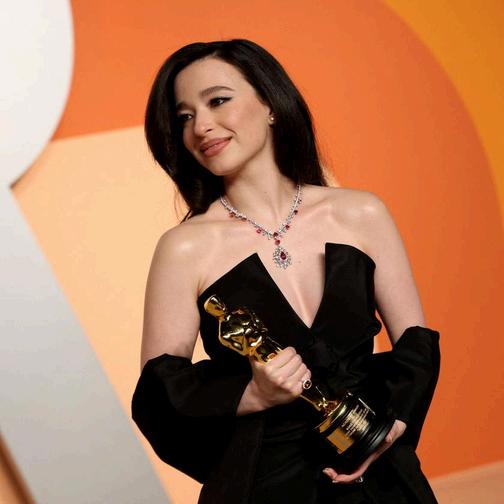
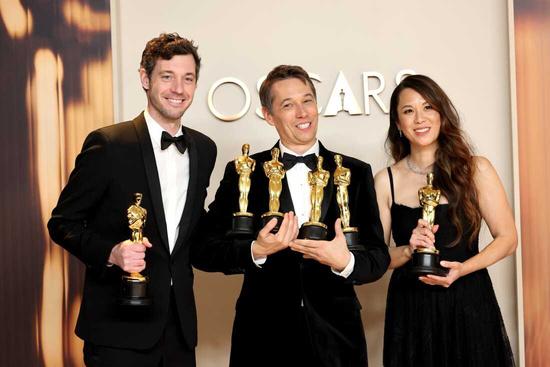
Anora’s victory at the Academy Awards definitely rolled out a new red carpet of invitation and acceptance for future independent filmmakers and studios, creating a pivotal shift in Hollywood and defying the “larger-than-life” entertainment business’ status quo Sean Baker continues to be an unwavering advocate for independent films, and will continue to make more striking and dazzling cinematic sensations in the coming future The film’s central song “Greatest Day (Robin Schulz Rework)” perfectly captured Anora’s historic moment of tsking the limelight at the Oscar’s –‘tonight this could be the greatest day of our lives’ –as Sean Baker’s sizzling hot hit of a film will certainly be remembered for years to come.
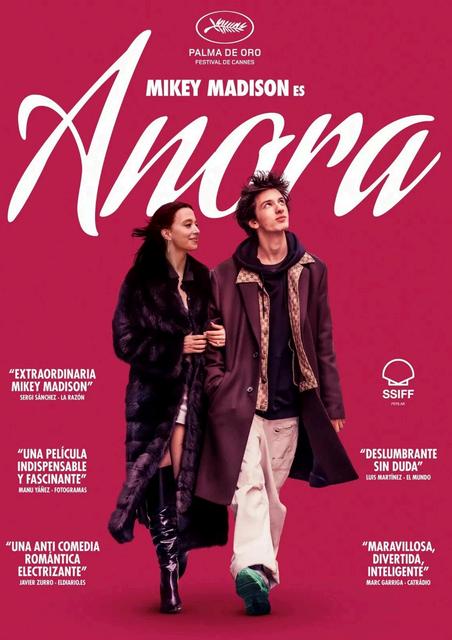
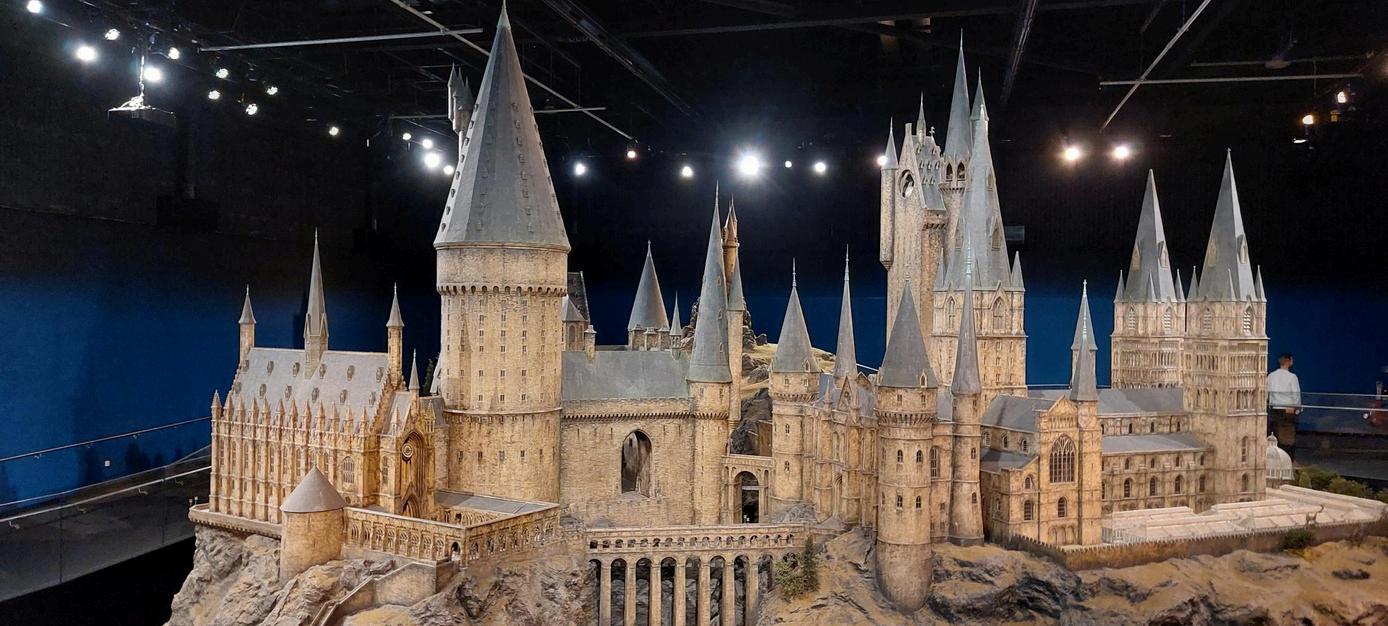
Even if you weren’t a Harry Potter fan, the trip to Warner Brothers Studios in March was still beneficial as it led us through the filmmaking process, from conceptualized ideas to fully realized visions.
Before we went on the public tour of the studio, we had the privilege to be given an in-depth private talk on mise-en-scene within the films (coincidentally given by a former Longroad student!). Having felt fairly confident in aspects of mis-en-scene, I was surprised to discover that's there's so much more to learn, especially when focusing on how the movie was made and how that knowledge can then be applied, For example Lord Voldemort's robe was dyed seven different shades of green to represent the seven horcruxes.
BY CONNIE SKEGGS BY CONNIE SKEGGS BY CONNIE SKEGGS
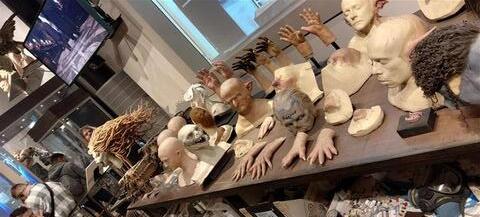
these miniatures to the life size sets after learning just how long the process took to be able to admire them in their full form.
On top of this we were able to view a few of the actual costumes worn by the cast that weren't on display to the public Although we weren't allowed to touch the costumes, due to being so delicate, the level of detail within them was inspiring. My favorites being professor sprouts collar, which was made to resemble leaves/ plants, emphasizing her love for herbology And Hagrid's jumper, which I had the honor to stand behind, revealing its magnitude, which I hadn't fully grasped while watching the films.
This experience aided our knowledge in both Harry Potter and the film industry in general, lending us an insight into what goes into making such a successful franchise
During this talk we were shown behind the scenes miniature models of sets, including Hagrid's hut and the burrow. It was fascinating to be able to compare
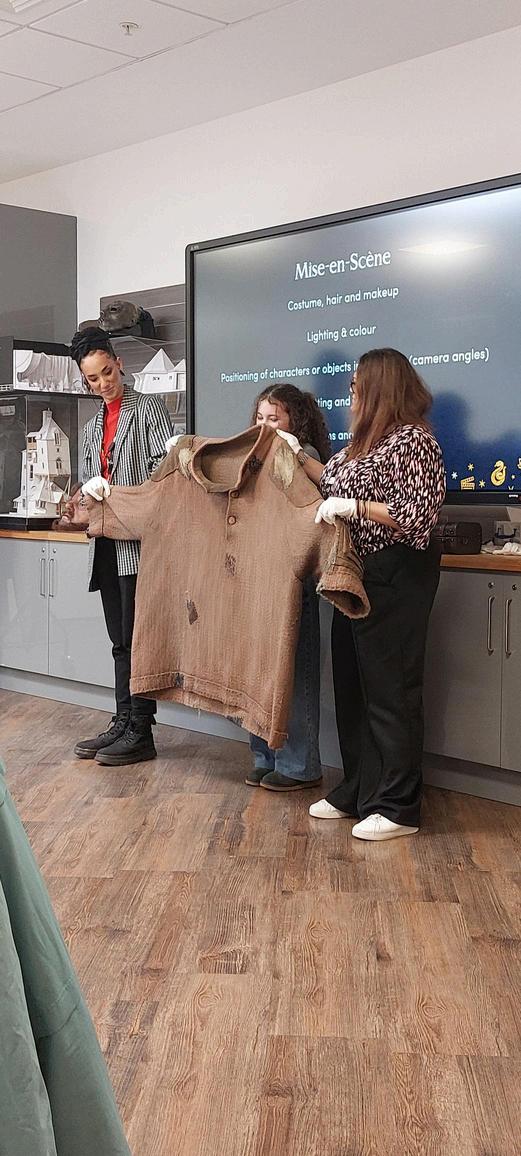
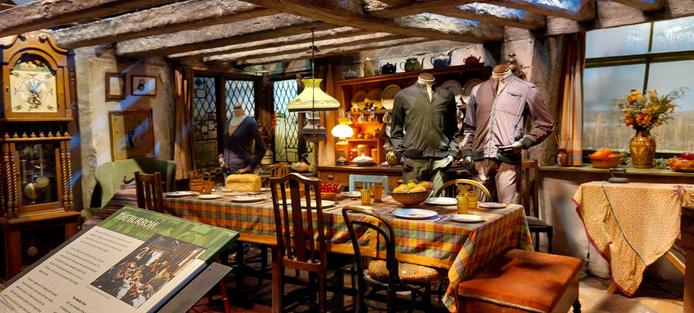

BY
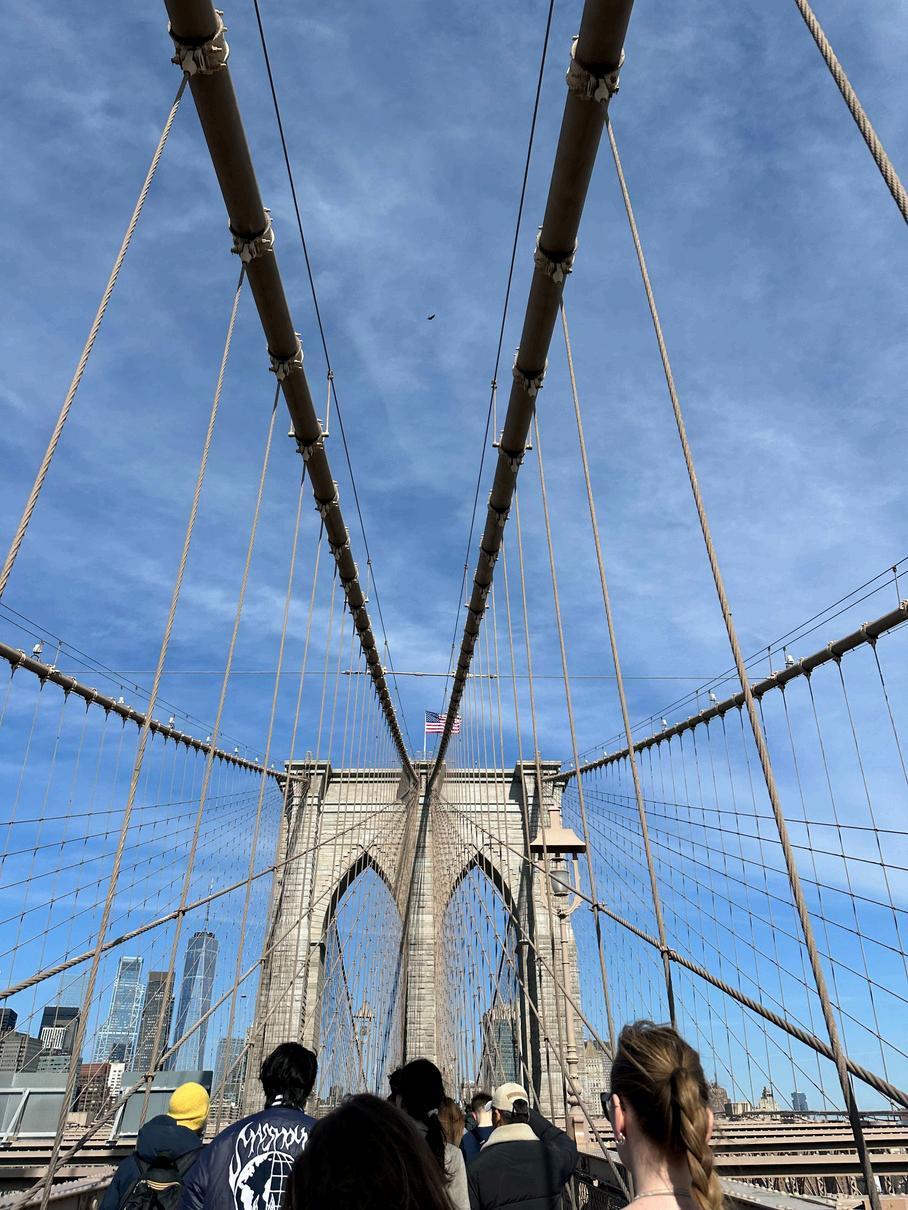
Our first full day in the City started off with visiting th mighty hazelnut-coloured Brooklyn Bridge, where w not only caught a glimpse of its neighbouring aegea counterpart Manhattan Bridge, but also the far awa Lady Liberty herself The views were incredible although very windy From our walk along the bridge, we ventured on to the National September 11 Memorial Plaza – a monumentally moving and beautifully designed memorial After lunch, we were treated with a cinema screening of Paola Cortellesi’s “There’s Still Tomorrow,” a powerful, emotional film about feminism
tand domestic violence. The day ended with a walkaround at the beehive-like Times Square, and a gorgeous scenic Staten Island Ferry ride past The Statue of Liberty – the midnight sky softly lit up by towering skyscrapers felt as if this moment was straight out of a movie.
Day two was full of views, shopping and art – spots included such as the High Line, Chelsea Market and the Whitney Museum of American Art (with an interactive tour!) The Whitney was unlike anything I’d ever seen before, and hosted eye-catching and absorbing contemporary art such as paintings, sculptures, installation art, and so much more The second day concluded with a breathtaking, sweeping view of the City’s vast skyline on The Top of the Rock observation deck, with views that you could barely tear your eyes away from
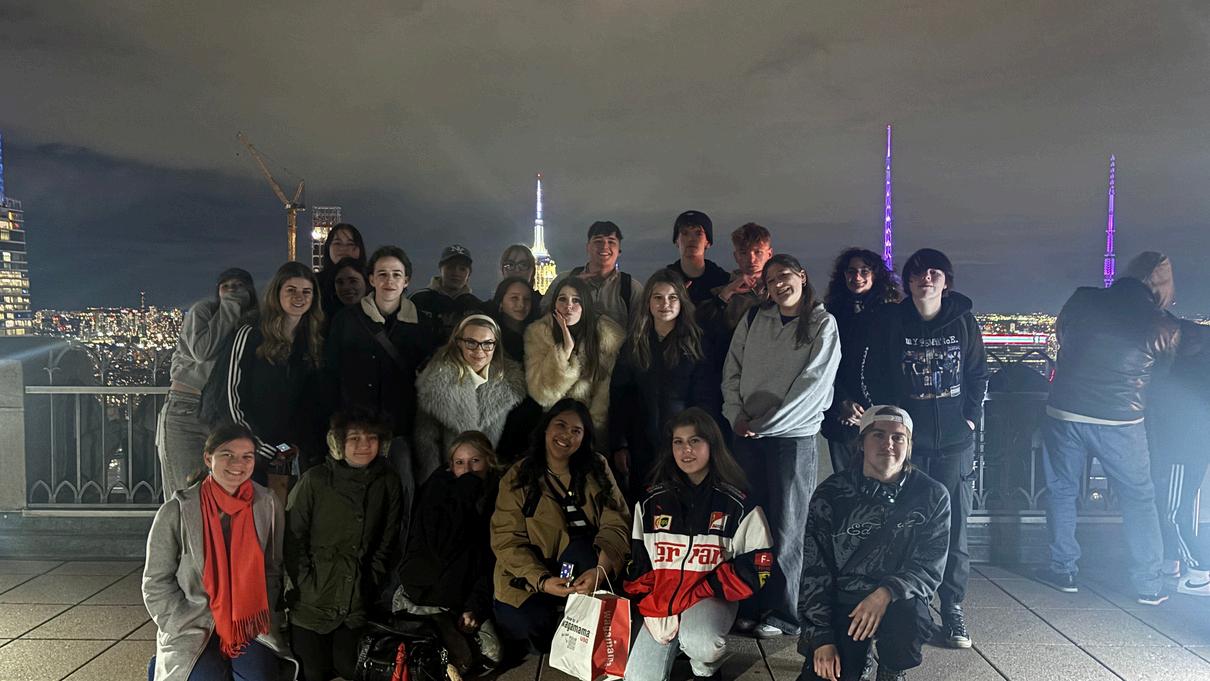
The following penultimate day of our time in the world’s most favourite concrete jungle was spent equally as busy and exciting; Grand Central Station was our first destination (an infamous nod to “Gossip Girl” or “Madagascar”), continued by a subway trip to
Central Park, where we were given a chance to explore the area. My friend group and I strolled through the peaceful and viridescent Central Park, walked past the legendary American Museum of Natural History (true cinephiles will recognise it from the “Night in the Museum”), and even stopped for a slice of pizza at ‘Famous Original Ray’s Pizza,’ (there, I had the best fries I’ve ever had in my life). To kick off our last evening in NYC, we were fortunate enough to see “Purpose,” a spectacularly entertaining and moving play bursting with drama, comedy, identity and familyhood.
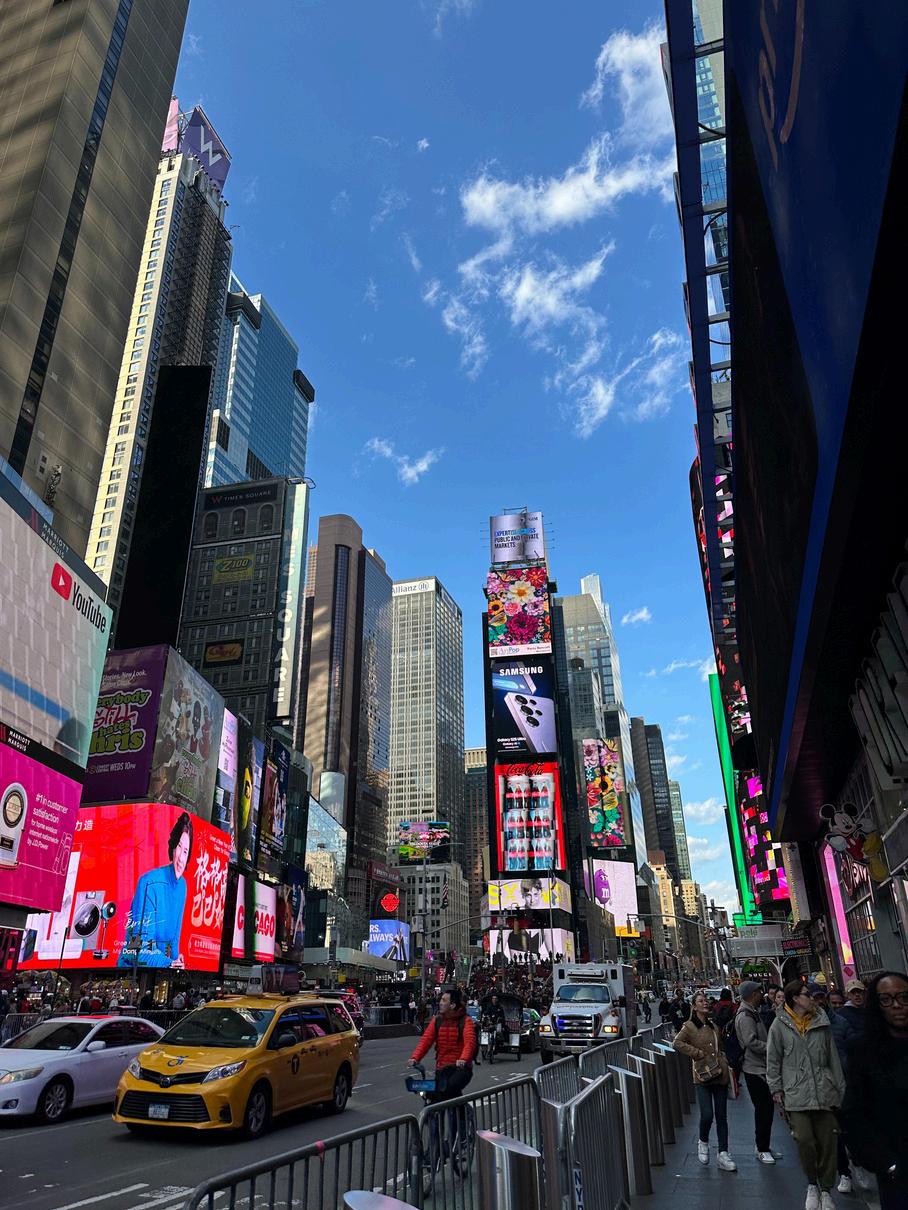
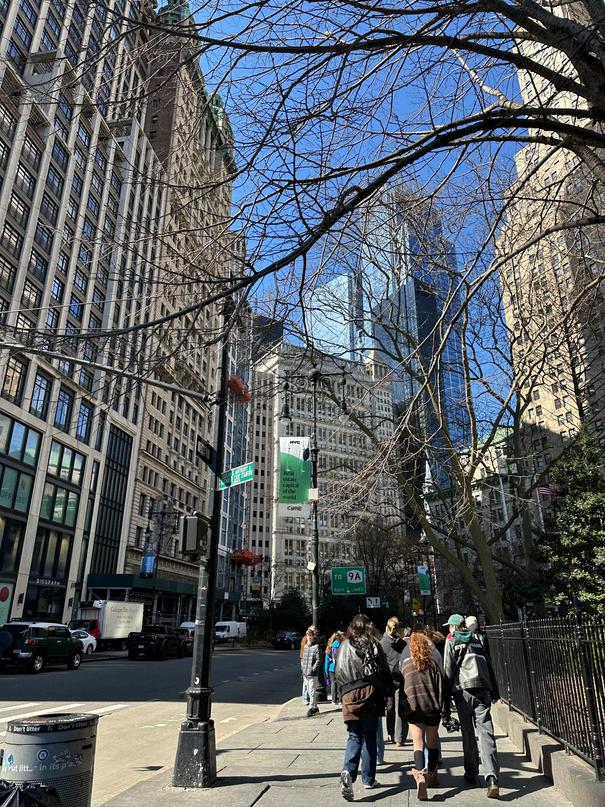
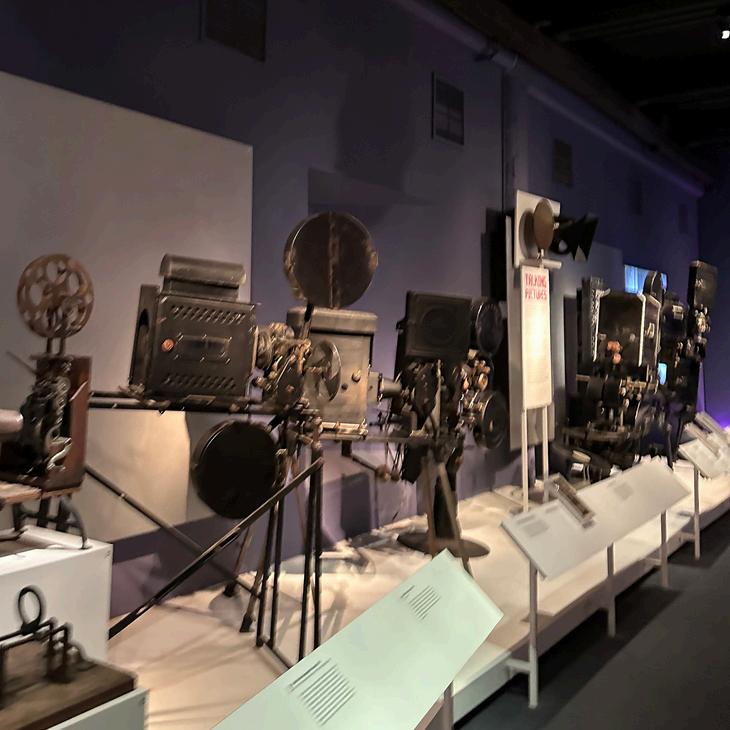
And finally, our last bittersweet day in New York City revolved around last minute gift shopping, room clean-ups, and praying that our bags would close with all the new exciting things we ’ ve bought during our stay. The coach ride back to JFK Airport didn’t leave me with much post-trip blues as I’d originally anticipated I’d be experiencing – instead, I was feeling overjoyed that I was able to go on this trip, meet so many new and interesting fellow students, see not one but two subway rats, and finally tick off “Visit NYC!!!” from my bucket-list (although I’d absolutely love to visit again). This trip was insane – in a good way, of course – and one that I’ll definitely cherish for a lifetime

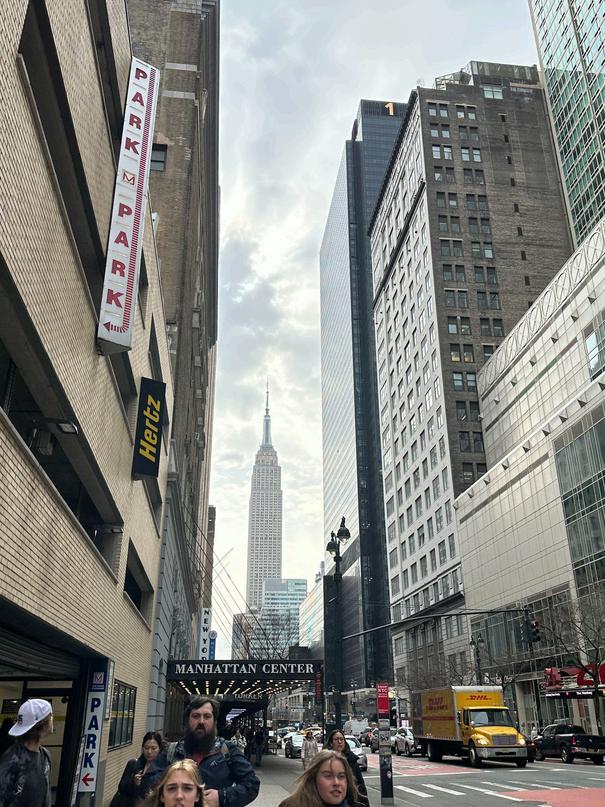
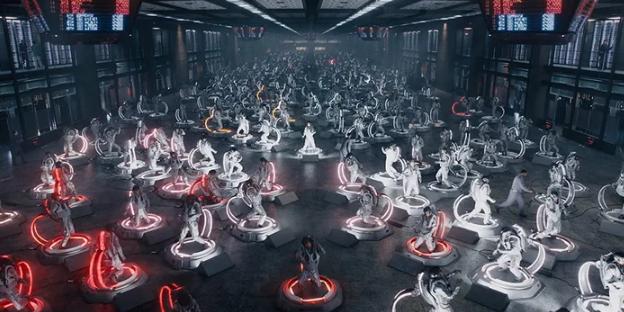
‘I was born in a time when people stopped trying to solve problems and just tried to outlive them.’
The opening monologue of ‘Ready Player One’ is a significant one. That I believe has predicted the outcome of the world or the world we are heading straight for We are becoming dependent on technology for everyday life. With people refusing to join, being ostracized as they don't understand the references or the memes of today's pop culture The film industry is predicted to be one of the biggest industries and earn 2.8 billion by 2028. The world is beginning to rely on media and technology And ready player one predicted this Released on the 28th of March 2018 with 11 awards and 57 nominations, it was an immediate success. It was a success for all the references for pop culture from the 2000s both in the book and the film It is subtly making fun of the audience and calling them out for knowing so much about the media while simultaneously calling out our growing dependency on it
We no longer need to grow as much as humans; we can simply find new content, new friends, new relationships The world has become a vast place and a minuscule place at the same time Our sense of community is lost. Communities used to be a huge thing with each village having committees for events such as bonfire nights and village days to put back into our own small economy ' s. However, we have replaced these relationships, these communities, with the gratification of likes and loves online ‘If a hundred
BY
thousand people like my post it does not matter if I do not have five friends in real life.’ Our worlds are disconnected.
Reading both the dystopian novel and watching the bafta awards winning film it has remissness of an eerily familiar future. Although not everyone is chronically online, we use online resources chronically We use them every day. For a bus ticket to pay for water to call a friend to write this article. Technology growth has been a completely amazing discovery with modern medicine and Technology advancing everyday increasing life expectancies and making jobs easier. However, that's not to say it isn't dangerous
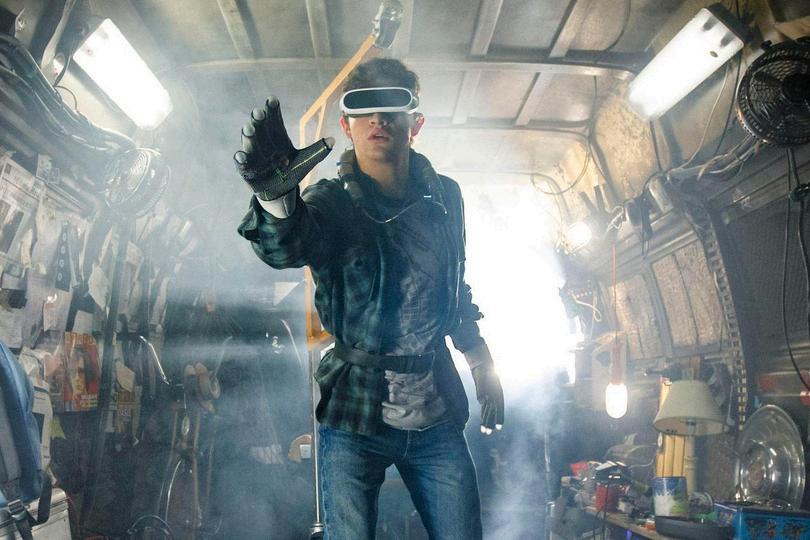
“People go to the oasis because of all the things they can do but they stay for all the things they can be.”
The quotes from the film and book remain true We are starting to escape rather than solve, using AI as a problem solver to do our homework and find out the football scores We are relying on technology but how far is too far? The covid pandemic showed us how life was chronically online, school, socials, jobs without ever leaving the house Since then, our dependence on using technology to be closer to people has significantly increased. Including the rise and fall of platforms such as twitch, skype and zoom alongside other online platforms such as YouTube and TikTok as becoming the easiest ‘get rich quick content schemes. ‘People are relying on fresh content that is produced quickly, and people are becoming millionaires of it The entertainment industry is the new wall street With potential for millions to be made. Profiting off people constantly needing content rather than silence
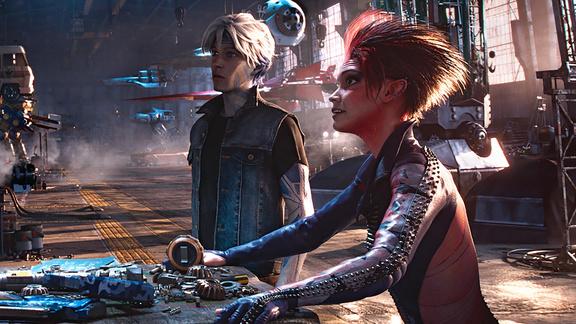
Do you remember when your grandparents would ramble about how in 100 years, we would have microchips under our skin? Newsflash we don't Oh, wait, we bought them ourselves and they became normal. They are a standard in this world. And although Ready Player One was dystopian when it came out it's now becoming eerily familiar Like dreaming of a place, you have been in real life So, what can we do to not make the same mistakes as our dystopian entertainment? Well in my opinion not much Especially as a society, all these dystopian ideas and concepts will just become normal. Life will just go on. Although personally we can take some accountability for our actions starting with not using
technology to escape problems but trying to use it as a tool to overcome our own problems. Many people refuse this fact.
At the end of the film Wade Watts wins the contest and shares his winnings with the high five Making fixes such as banning the antagonist company and closing the oasis stating, “people need to live in the real world too ”
Both the film and the book acknowledge that the online world can be a danger The world in ready player one was a world of decay A world no one believed worth saving so they ran towards escapism however we still have time to save our world Before the dystopian no longer becomes an eerily familiar concept and becomes a reality. A reality we run away from. As humans that is what we do. We run away or we stay and fight We cannot face our mistakes and fight them, so we run The easiest way to do that is to turn to the devices we use every day. Substantial changes don't come from modifying algorithms or going over old ideas, they come from new thinkers. As a society we discourage new thinkers as it is one thing all humans collectively fear change. We shouldn't rely on heroes to save us We need to save ourselves because nobody else will

BY DOMINIC RAMSHAW BY DOMINIC RAMSHAW BY DOMINIC RAMSHAW

g g y p y my favourite Hollywood actors - Pedro Pascal, Tony Dalton, and last but not least Toby Maguire. Here in my article, I will discuss my favourite actors who have survived half a century and charmed the entertainment industry with their talent.
Pedro Pascal
University’s Tisch School of the Arts There, he began acting, playing roles in “The Good Wife", “Buffy the Vampire Slayer,” and “Law and Order.”
After countless smaller roles, he first got recognised for his role as Oberyn Martell in HBO’s “Game Of Thrones”, and as Agent Marcus Pike in “The Mentalist”
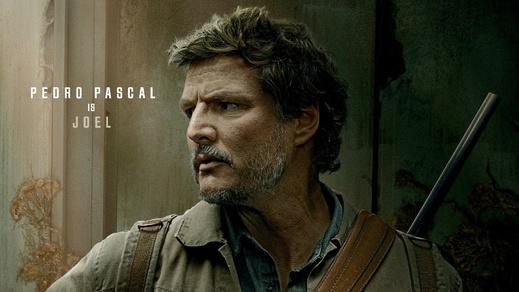
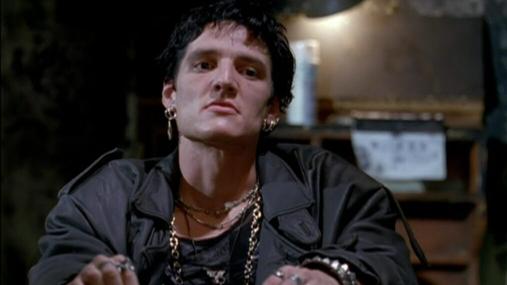
As his career progressed, Pascal scored larger, more xciting and outstanding roles such as Tovar in Kingsman: The Golden Circle” - one of his boldest oles playing the brave Javier Peña in “Narcos” and he sombre yet distinctly warm Mandalorian in Star Wars’ hit-show “The Mandalorian,” which really oared his acting career to a whole different levelorget about cloud 9. Most recently, Pascal was cast s the protective protagonist Joel Miller in one of he most beloved series currently popular “The Last f Us,” based on the sought-after video game of the same name
Pascal, a favourite mostly due to his ability to be able to have a charming, bubbly, and comedic personality all while landing roles playing stern characters with twisted parts (and playing them all brilliantly).

famous portrayal as dorky Peter Parker in “SpiderMan” and “Spider-Man 2” made Maguire a household name. An American born June 27, 1975 in Santa Monica, California, he kicked off his acting career by playing minor roles in the 90s.
His first film was “This Boy's Life,” followed by “What's eating Gilbert Grape” - but later he scored slightly larger roles in “The Cider House Rules” and “Fear and Loathing in Las Vegas.” Once he finally snatched his role as the beloved red-and-blue, wallclimbing superhero of NYC, the role gave him a quick sensation Since then he’s starred in multiple Spider-Man-related films, most recently appearing in “Spider-Man, No Way Home,” with the newer Spidermen
a
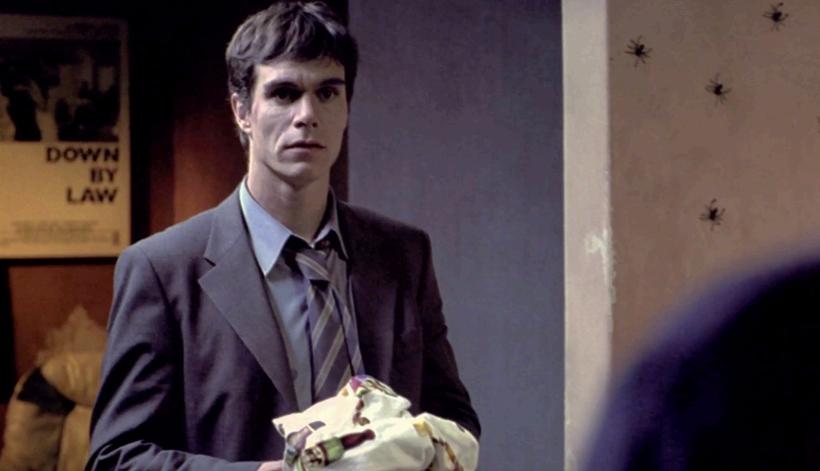
13th 1975 in Laredo, Texas, Dalton grew up in Mexico and established a successful career in the Spanish speaking entertainment industry. Appearing in multiple Mexican films and TV shows including “Los Heroes del Norte,” “Flor Salvaje,” “Sr Ávila,” "Matando Cabos," and "El Gringo "
He only gained wider recognition after his incredible role in “Better Call Saul” as Lalo Salamanca Portraying a charismatic and controlled psychopath who was able to create a comedic scene one moment, and a harrowing scene the next He was able to make you laugh and cower - a man of true skill!
Let’s be honest, is there anyone who hasn’t heard of him? Tobey Maguire’s groundbreaking and world
After his role as Spider-Man, he quickly gained popularity, landing him the roles of Sam in “The Brothers”, Nick Carraway in “The Great Gatsby”, and many more (He even made a quick comedic cameo as himself within “Tropic Thunder.”) Maguire’s career has predominantly revolved around his role as Spider-Man within the Marvel superhero franchise, and although people mainly saw him as that same shy yet quietly heroic Peter Parker, he has since played incredible characters in other films
As time goes on we will hopefully see only more of them - until they become like Sir Ian McKellen or Morgan Freeman - acting well after their retirement for the audience and the applause.

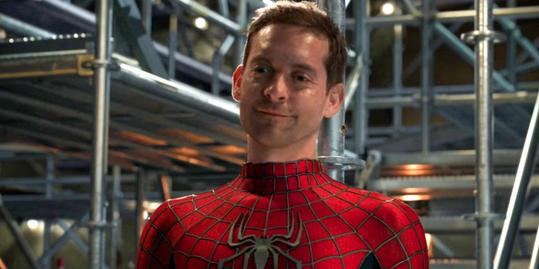
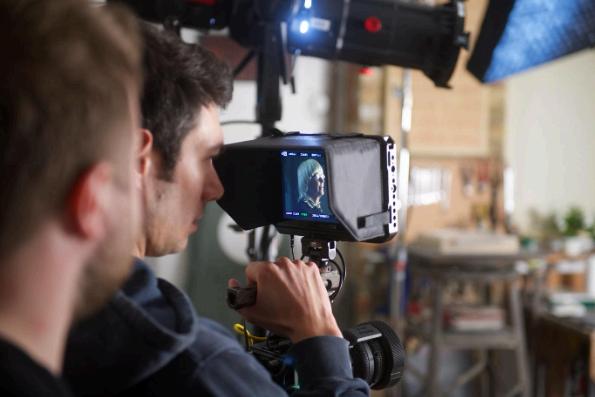
BY SUSANNAH TANKARD BY SUSANNAH TANKARD
Nearing the end of 2024, at the beginning of December, I was lucky enough to help with the shooting of a documentary focusing on the Cardozo Kindersley Workshop, here in Cambridge.
The documentary shows the life of David Kindersley and his contributions to letter cutting in England Being the apprentice of Eric Gill (a sculptor who carved reliefs into stones and the creator of the well-known font - Gill Sans), Kindersley has kept the traditional methods of stone cutting alive, his work extending into major architectural commissions including the gates to the British Library, and the street signage seen around Cambridge Amongst other things, Kindersley - an Alphabetician - was known to experiment with letter forms and spacing in his work, and created the Octavian font which is used on the street signs.
I went along to the filming,at about 7pm in the evening Upon arriving, as I walked down the driveway, I bumped into Louise – who was responsible for getting the team together and was also the art director Louise let me in and introduced me to Ross, the director of the production, Robyn, who was helping with some of the practical effects, and Ben, the man in charge of lighting
Leading me into the ‘meeting room ’ , Ross gave me a quick run down on the shot we were going to be filming It was a shot of Lida, walking from the meeting room and into the main workshop. It was a scene that’s reminiscent of a dream; the lights
shining in rays through the dry ice, and gold dust raining down around her while the camera pans around to her face from an over-the-shoulder shot as Lida, in a voice over, talks about David Kindersley In theory, it was a very simple shot to capture, but this is a film production, so it took us nearly twoand-a-half hours to set up a 10 second shot The most finicky of which was getting the lighting to shine through the windows at the right angle and for it to be at the right intensity
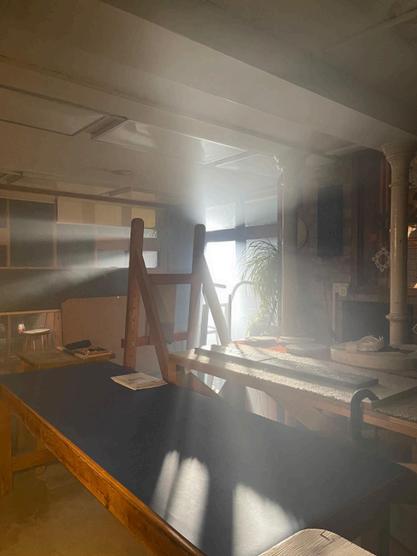
One of the first jobs I was tasked with across the three hours, was helping Ben shift lighting equipment and change the reflectors over This involved loosening the clamps from the stand that held the reflector, taking the reflector off, switching the reflector over to a smaller frame and tightening it back in. The clamps –being professional equipment and having gone through much use – were stupidly stiff and took a good threeminutes to loosen Hilariously, the smaller frame didn’t work so Ben and I had to move everything back to the larger stand
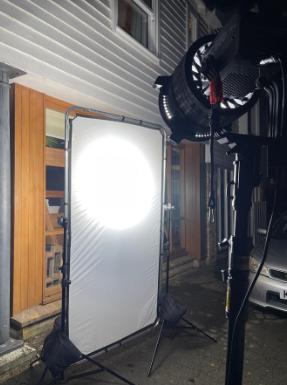
At one point, we swapped out the reflectors, wanting to see if the light would be stronger with the smaller screen It was – but the light showed a bit of the background so we had to go with the larger reflector and bump up the intensity. This light setup, with the smoke machine added, ended up looking ethereal, making the workshop appear larger than normal Some time later, Ross noted that the light wasn’t making the rays sharp enough, so Ben and I readjusted the rigg, brought it forwards, changed the height, and then placed the lamp closer to the reflector It ended up working a bit better, but I don’t think Ross was particularly satisfied
In the end, he made me a runner to deliver Ben messages on where to move the light We got there in the end! When helping Ben with the lighting, I learnt that he works with the BBC, based in London and Wales, as a Lighting Director. For most of the time I was helping, I was acting as the ‘Runner’ Passing information to people, passing objects and various bits of equipment to those that needed it, etc Louise and I had particular fun with the wafting boards; spreading the smoke around the room to make it even more hazy while Robyn pointed the machine in various directions.
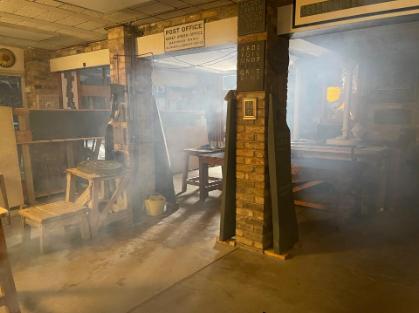
When everything was set up and the scene looked how Ross wanted it, I became the stand-in for Lida and walked through her parts with Ross doing trialruns with the camera This was to make sure that the camera was focussing on the right areas and for the lighting to be the right intensity for the shot. Ben, through a separate screen that was linked to Ross’ camera, was able to adjust the lighting while in the ‘meeting room ’ .
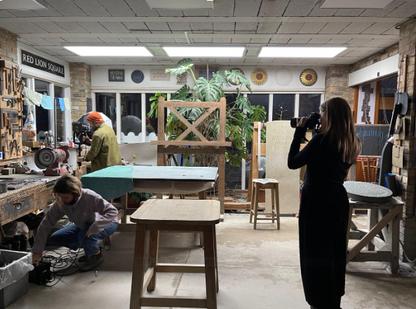
Finally, at the end of the nearly three hours of set up, we found Lida and shot the scene. This took 15 minutes. It was worth it, however, when the lighting, the practical effects and the cinematography all created a beautiful looking memory sequence
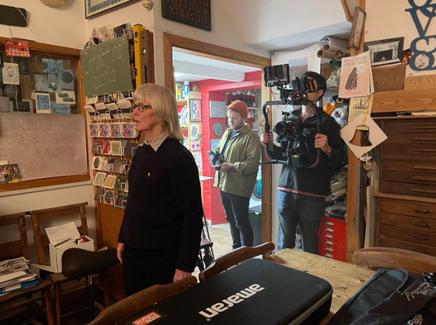
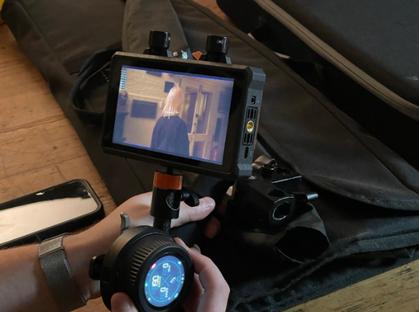
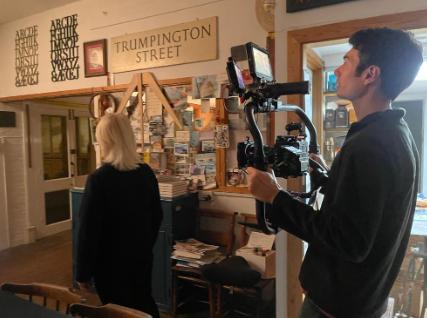
These images hopefully give an insight into the complexity of setting up what, to the untrained eye, could look like a simple shot and only appears on screen for a few seconds. It is that persistence and attention to detail that creates something beautiful, as well as something effective
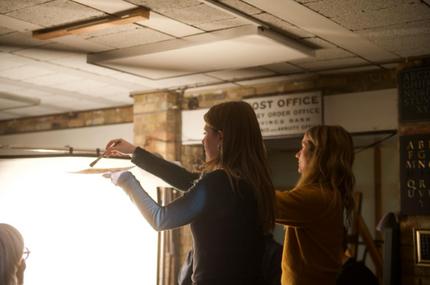
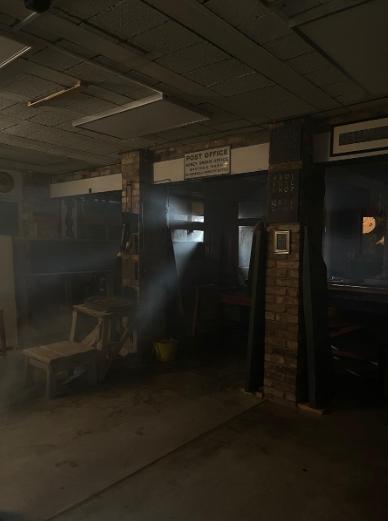
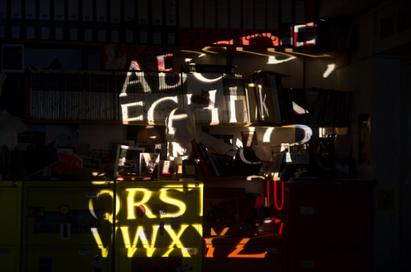
BY CHARLOTTE DAVEY BY CHARLOTTE DAVEY
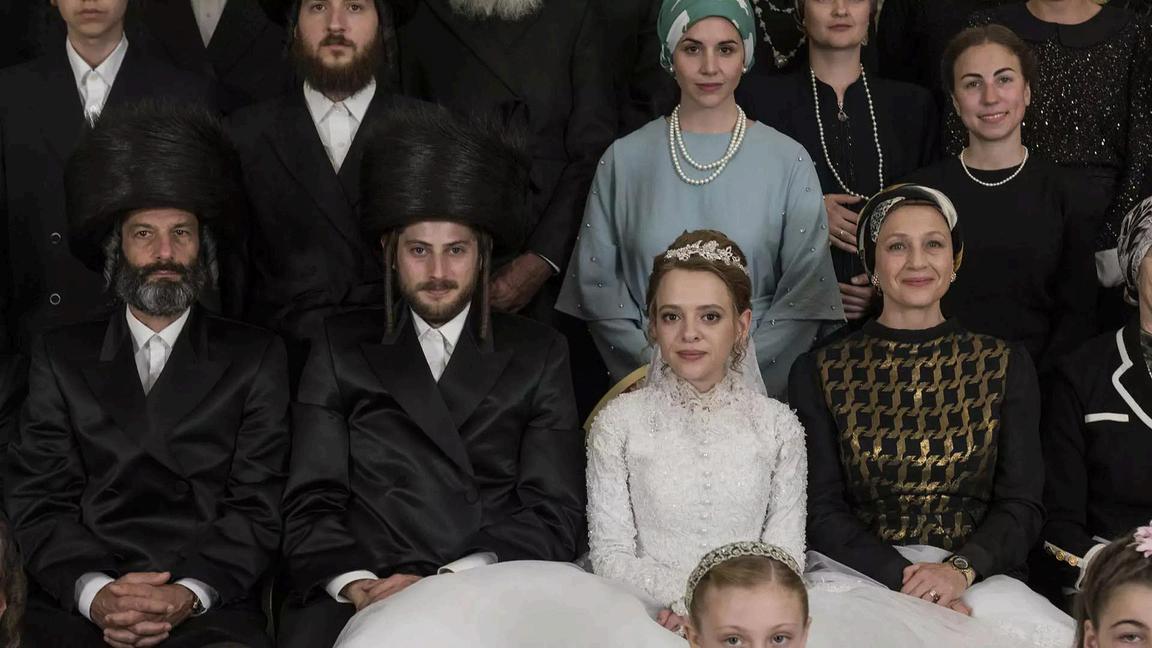
Representation in film isn’t just an academic topic it’s about the stories we grow up with, the characters we relate to, and the way they shape how we see the world. Films don’t just entertain; they reflect society’s values. And sometimes, they help create them.
When stereotypes are repeated on screen, like the “Mammy” figure in Gone with the Wind or hypersexualised female superheroes, it’s not just lazy writing. It’s reinforcing outdated and often harmful ideas about race, gender, religion, and identity. On the flip side, good representation can open minds, build empathy, and challenge ignorance But how much harm can a stereotype in a movie really do? More than you might think.
In March, I visited Auschwitz on a one-day educational trip with the Holocaust Educational Trust, part of their “Lessons from Auschwitz” programme. It was haunting. The town of Oswiecim, renamed Auschwitz by the Nazis, was transformed from an ordinary Polish community into the site of one of the most infamous genocides in history Built with chilling efficiency, Auschwitz received its first prisoners just six weeks after it was ordered. Walking through the camps was surreal. You pass a restaurant in the grounds which I found jarring, but it underscores Auschwitz’s dual role as a memorial and a tourist destination. What struck me most was how quickly ordinary life turned into mass murder and how that horror didn’t begin with bullets. It began with ideas
Before the Nazis came to power, antisemitism was already deeply rooted in Europe. Jews had been blamed, excluded, and stereotyped for centuries, in real life and in stories When Jewish families fled Nazi Germany early on, many returned because antisemitism in surrounding countries was even worse
The Holocaust wasn’t just carried out by Nazi soldiers, it was enabled by neighbours, by silence, by centuries of hatred that had become normal. And many of those attitudes were passed down through storytelling
Let’s talk about those stories
You’ve probably heard fairy tales from the Brothers Grimm, stories like Rapunzel, Rumpelstiltskin, and The Little Mermaid But have you noticed the villains often have hooked noses, dark hair, and greedy intentions? These aren’t just creative choices, they’re based on antisemitic caricatures
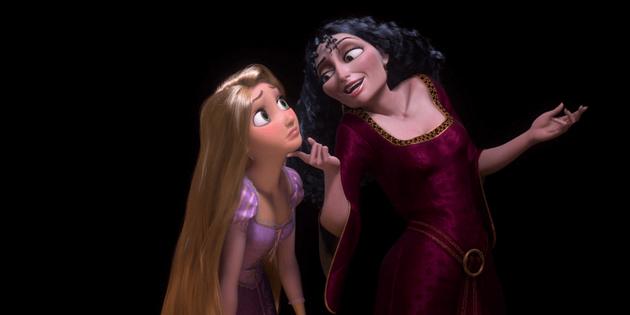
Take Disney. Their classic princess films, based on Grimm stories, often follow a striking pattern: blonde, blue-eyed heroines facing off against dark-haired, sinister villains Mother Gothel in Tangled literally steals a baby for her own gain, a nod to the age-old blood libel myth about Jews Ursula from The Little Mermaid transforms into a dark-haired woman to trick the prince These tropes aren’t accidental, they’re inherited from a history of dangerous storytelling
And Disney isn’t alone. Even Barbie movies carry these patterns. In Barbie of Swan Lake, the villains, Rothbart and his daughter Odile are again marked by “Jewish” features: hooked noses, dark curls, and a thirst for power.
For a long time, Jewish characters in Hollywood films were either invisible or reduced to stereotypes: the greedy banker, the neurotic intellectual, the comic relief. Even when Jewish actors were cast, their Jewishness was often erased to fit into a more "mainstream" (read: Christian, white, and middle-class) narrative.
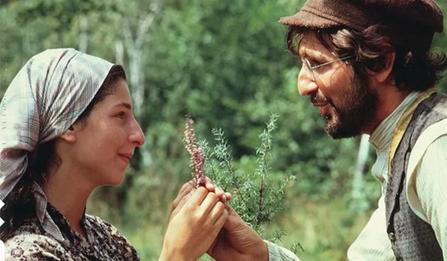
In classic films like Gentleman’s Agreement (1947), antisemitism is addressed but from a safe distance. The Jewish experience is filtered through the eyes of a non-Jewish protagonist, which avoids showing authentic Jewish life Similarly, Fiddler on the Roof (1971) is one of the rare mainstream films to focus on Jewish culture, but it’s often treated like a nostalgic folktale rather than a story about resilience in the face of discrimination
n more recent decades, Jewish identity has started to be explored in more meaningful ways Schindler’s List (1993) and The Pianist (2002) offer powerful depictions of Jewish suffering during the Holocaust.
But these are still largely trauma-based narratives. Stories of joy, everyday life, or Jewish heroes outside of a Holocaust context remain rare
More contemporary films and shows, like Unorthodox on Netflix or Shiva Baby, give a more nuanced view of Jewish identity, faith, and culture These stories are starting to push back against one-dimensional portrayals But overall, Jewish representation still lags behind.
And then there's the troubling persistence of Jewishcoded villains in mainstream cinema. From the greedy goblins in Harry Potter, designed with exaggerated noses and money-obsessed personalities, to Marvel’s use of shadowy global elites there’s a worrying pattern Even when unintentional, these images echo classic antisemitic tropes This kind of representation is especially dangerous when audiences aren't aware of the history behind it The result? Harmful ideas get passed on without question
Because kids absorb what they see. When the villains all look a certain way, children link those features with evil. If they later meet someone who resembles those characters, the association sticks, sometimes unconsciously, sometimes not
Think about it: before World War II, Jews made up less than 2% of Europe’s population In Germany, it was under 1% Many ordinary people who bought into Nazi propaganda had never even met a Jewish person Their ideas came from hearsay, prejudice and stories
Stories matter. Movies matter. The Nazis knew this. They created the Hitler Youth to shape children’s minds early. Today, we might not be part of a fascist regime, but we still consume media that often pushes the same old stereotypes. If we want to build a more inclusive, fair world, we have to start by questioning what we watch Who gets to be the hero? Who’s always the villain? And what message are we sending when we don’t challenge these choices?
Representation isn’t just about ticking boxes, it’s about truth, empathy, and creating stories that don’t hurt people The media we consume as children stays with us for life. If we want change, it starts with what we choose to show on screen.

